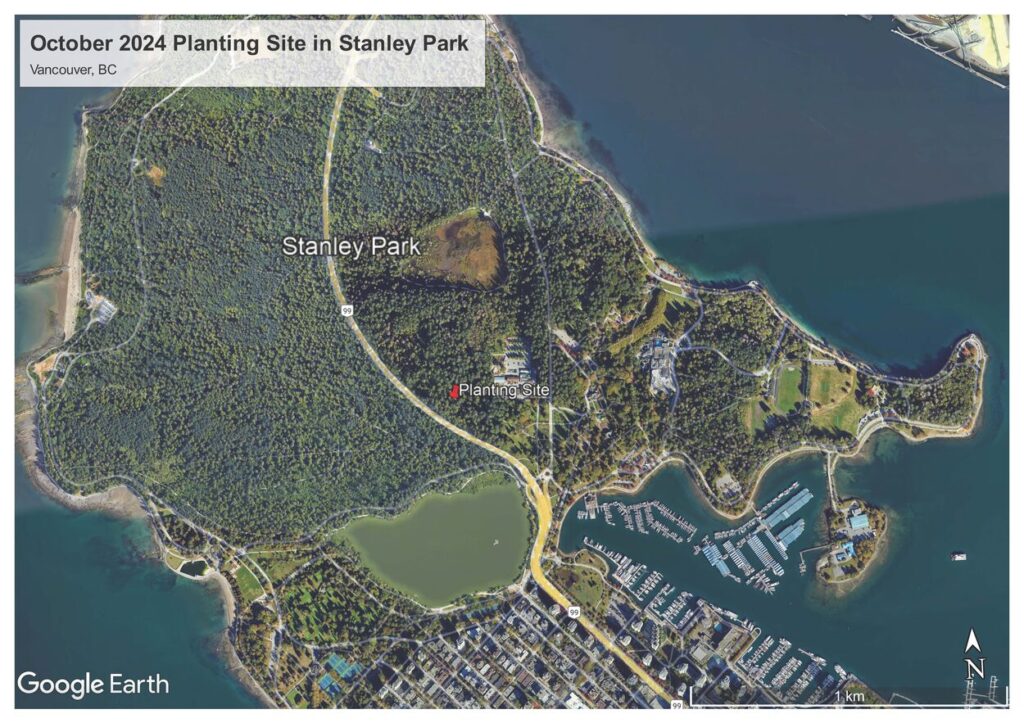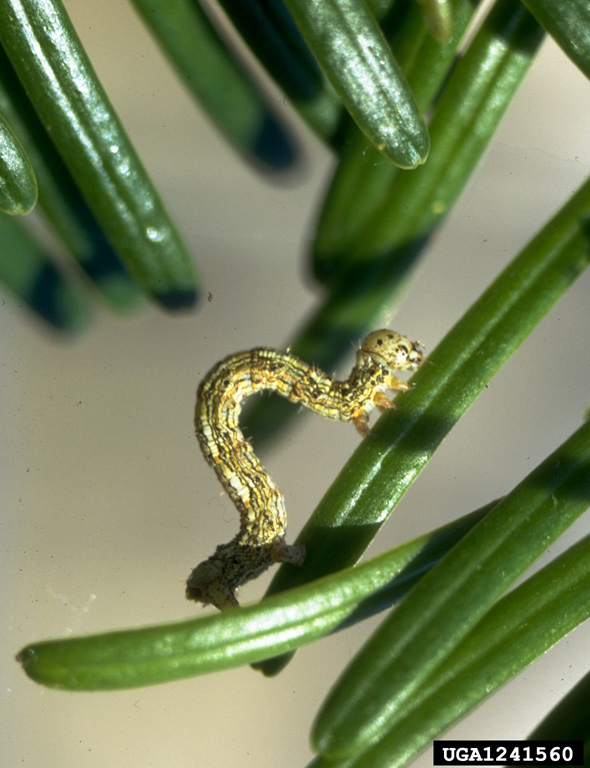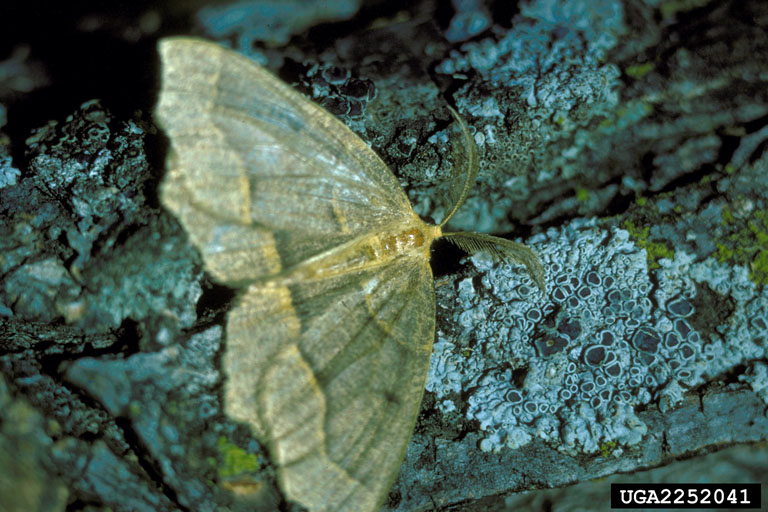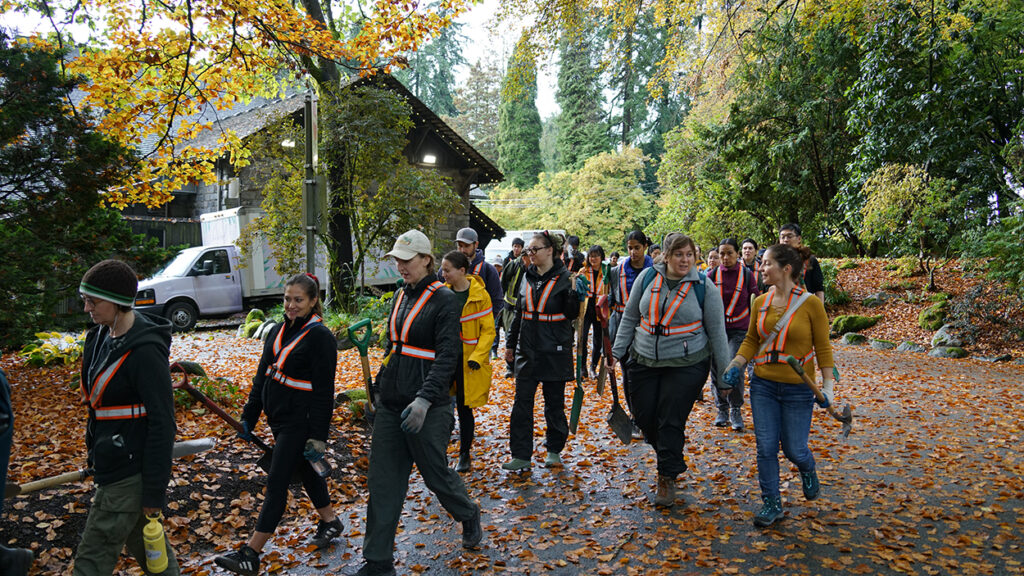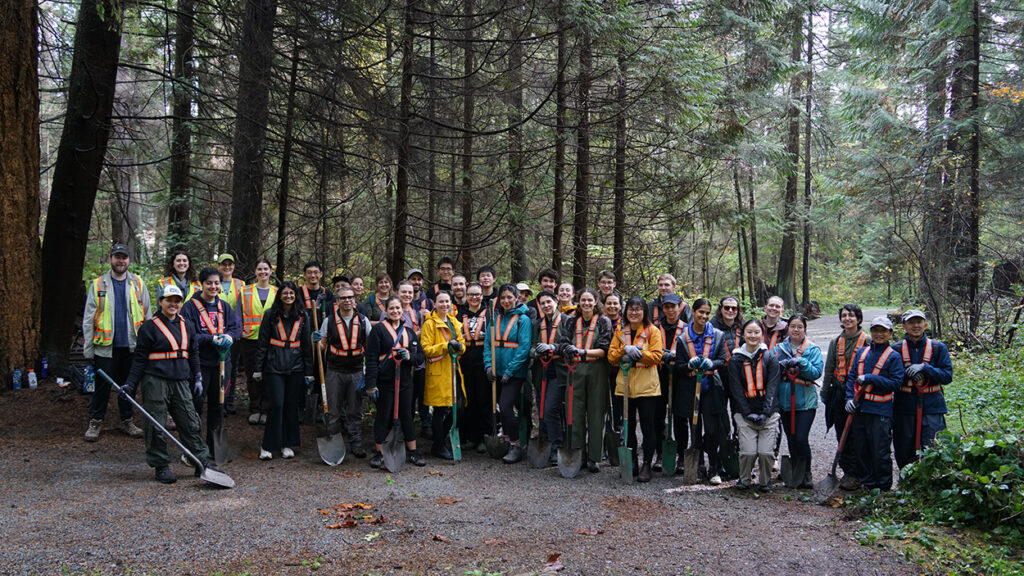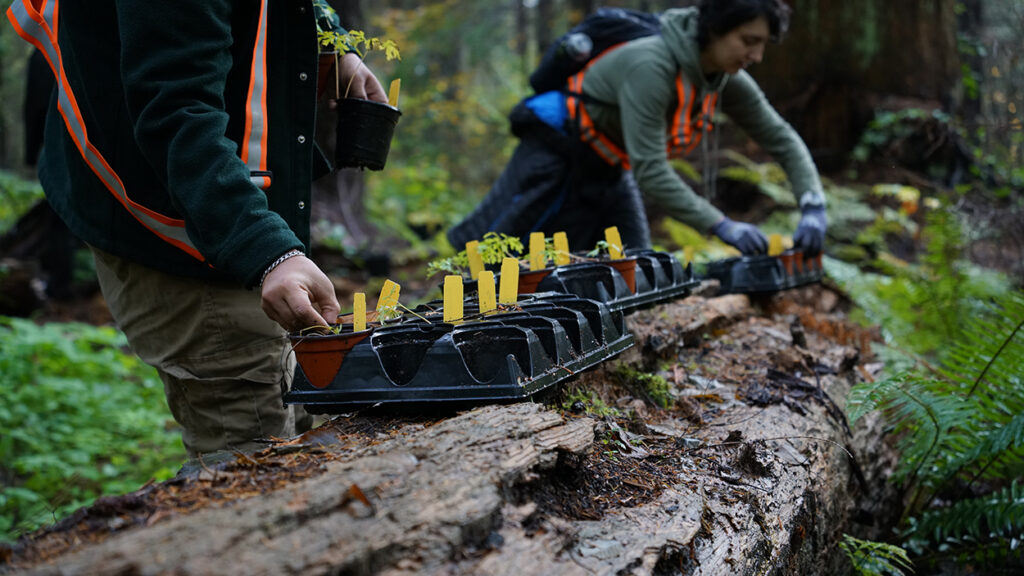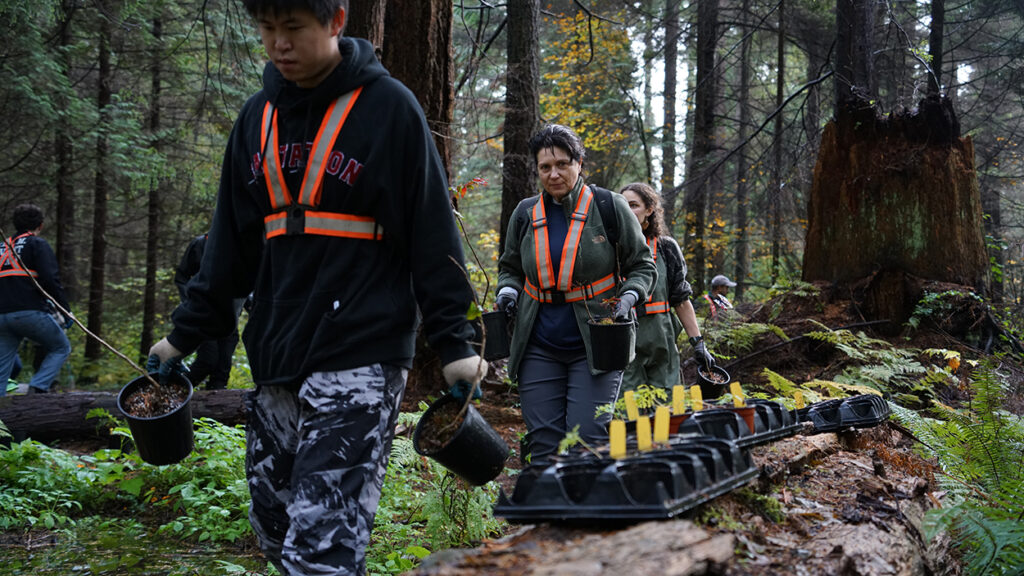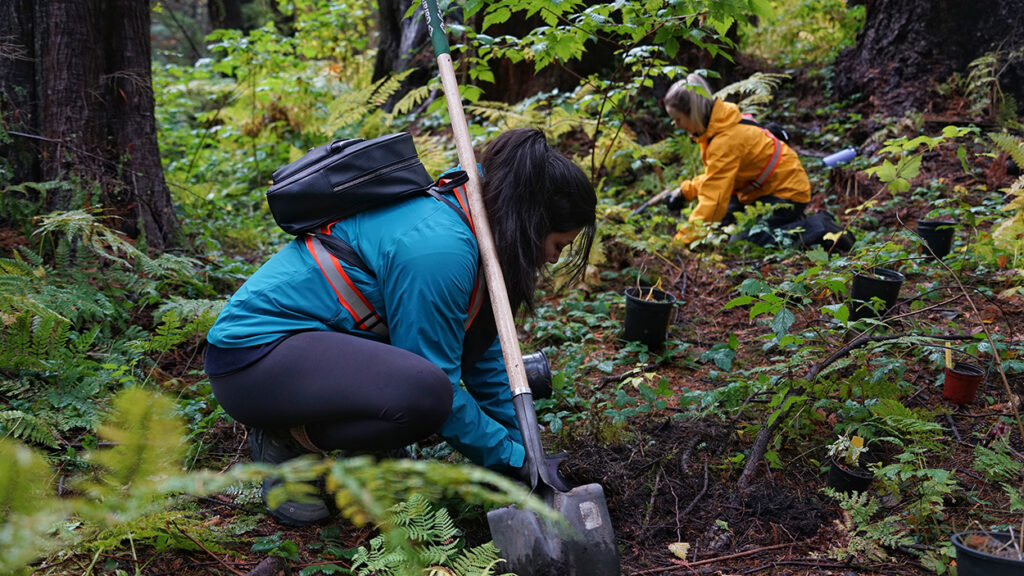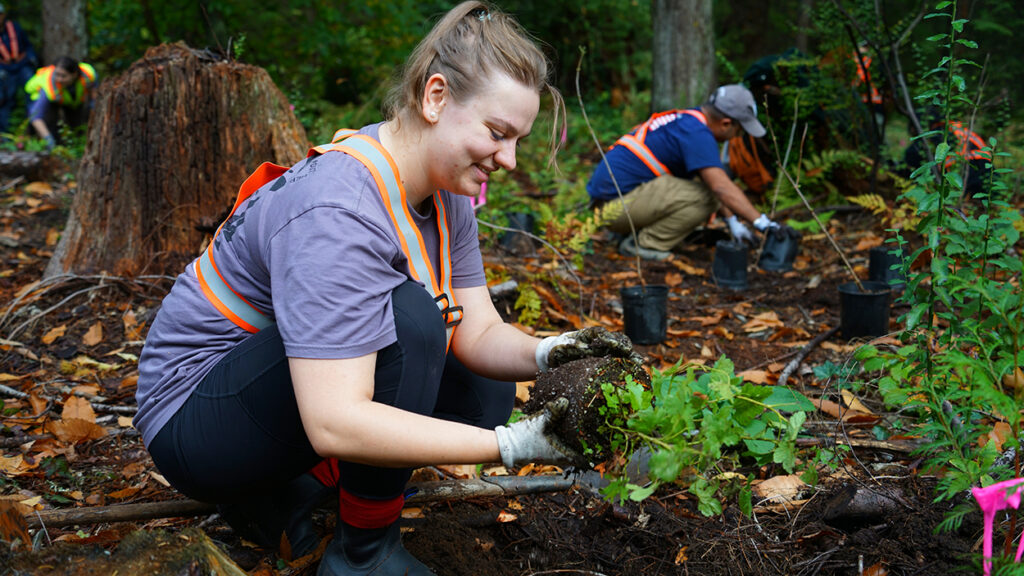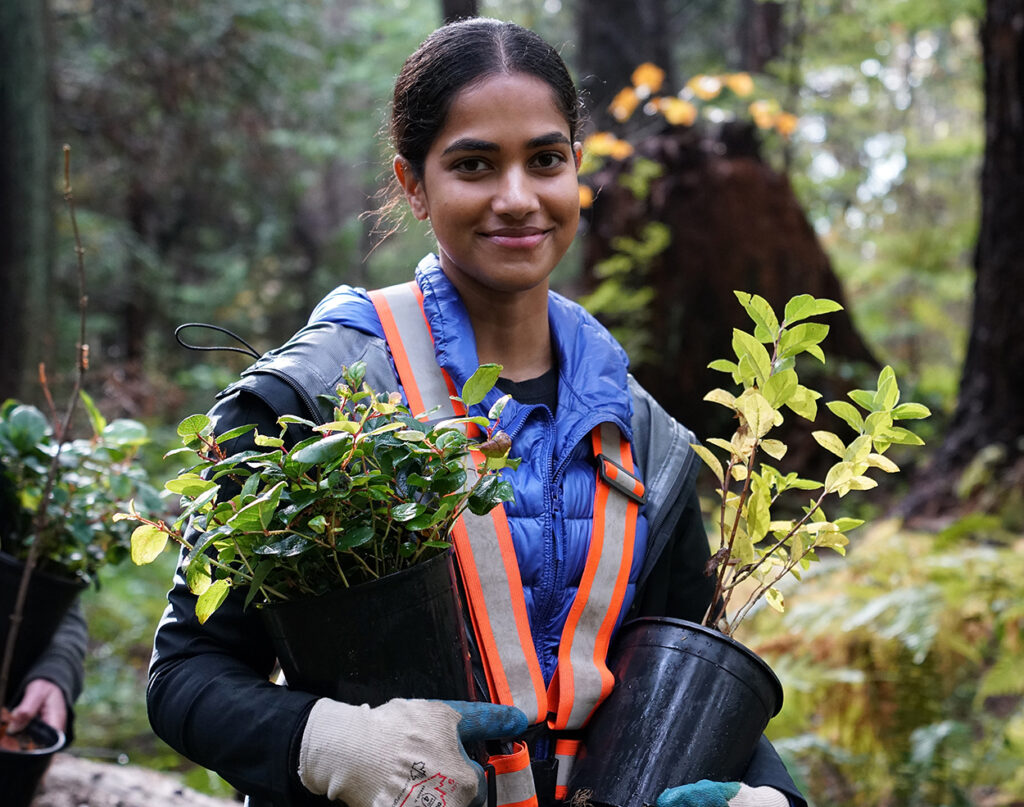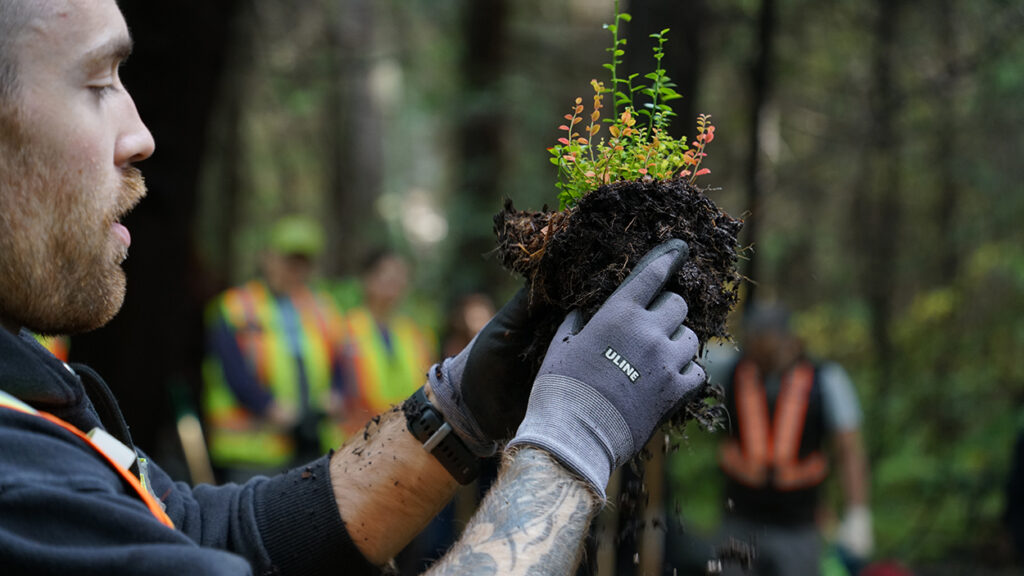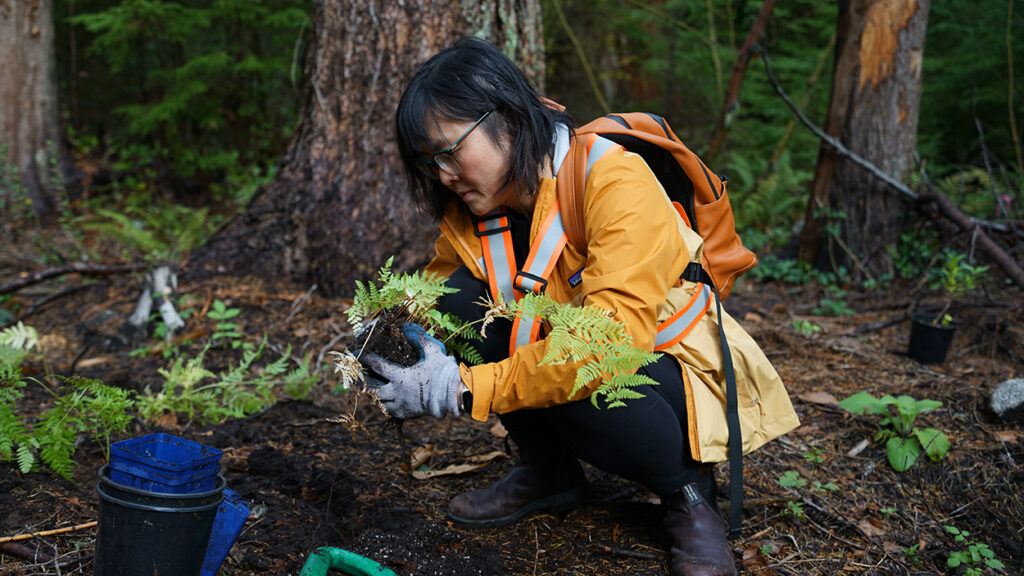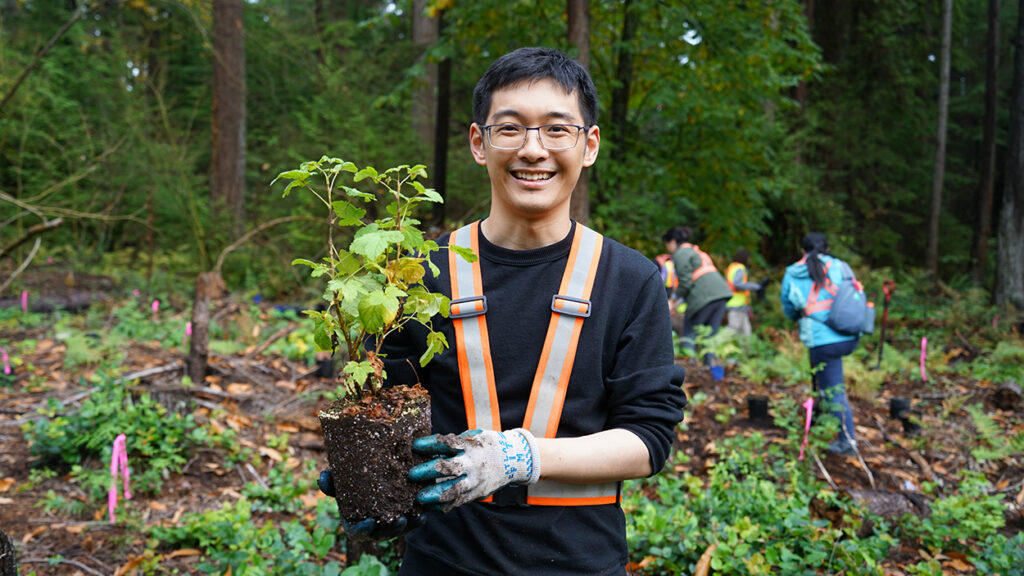Restoring Stanley Park: Community and Conservation Efforts Combat Moth Infestation
Stanley Park is Vancouver’s first and largest urban park, stemming from 400-hectares of coastal temperate rainforest, with views of water, mountains and majestic trees along the park’s famous Seawall. With support from Tree Canada’s Operation ReLeaf program, a recent project is helping to restore previously disturbed areas within this well-known park following a devastating infestation of the western hemlock looper (Lambdina fiscellaria).
The replanting initiative, involving community volunteers and the Stanley Park Ecology Society (SPES), added 480 native trees and understory plants along sections of the South Creek Trail. These understory plants will support the growth of young conifer trees planted by the City of Vancouver by preventing the spread of non-native species like the Himalayan blackberry.
The Threat of the Western Hemlock Looper
The Western hemlock looper is a native moth that plays a natural role in the ecosystem and the disturbance cycle of forests across western North America. Its larvae feed on the needles of coniferous trees, particularly western hemlock, and occasionally on western red cedar and Douglas-fir. Under typical conditions, the moth’s presence is part of a healthy forest cycle. However, poor forestry practices dating back to the 1970s led to an overabundance of hemlock trees in Stanley Park, making the forest unusually vulnerable to the looper’s cyclical outbreaks. In 2019, this imbalance magnified the impact of the looper, resulting in the loss of over 160,000 trees.
Photo by Jerald E. Dewey, USDA Forest Service, United States, retrieved from Wikipedia. Licensed under CC BY 3.0
As Dacyn Holinda, Conservation Projects Manager at SPES, explained, “A large number of western hemlock loopers had developed in the park, and when the population exploded, it resulted in a devastating impact.” With climate change intensifying the problem, including warmer summers that favour pest survival, Stanley Park faced unprecedented canopy gaps, which increased the risks of non-native plant species colonizing the open spaces.
The Challenge of Tree Removal
To address this loss, the City of Vancouver is in the process of removing approximately 16,000 – 20,000 trees as a result of looper-related mortality. This process has seen some controversy among residents who care deeply about preserving the park’s wilderness. “Tree removal is a contentious issue,” says Holinda, but the reality is that the trees have died, and whether they’re cut or left standing, the canopy gaps are there. “So as a result of that, there’s a significant safety concern as well as fire risk concerns with all these dead trees.”
The removal process stirred strong feelings, but, as Holinda added, “Our approach has always been to try to take the passion that people have for Stanley Park and channel it into effective means”— like this replanting project, which directly involves the community in the park’s renewal.
A Community-Driven Replanting Effort
The October 2024 planting day united forty community volunteers to plant a diverse selection of native plants, including lady ferns, Pacific bleeding heart, salmonberry, and wild ginger, a species of cultural significance to the local xʷməθkʷəy̓əm (Musqueam), Sḵwx̱wú7mesh (Squamish), and səlílwətaɬ (Tsleil-Waututh) Nations.
Planting culturally significant species was essential, Holinda emphasized: “It helps increase the resilience of the park and [by planting] species that are culturally important, [it creates] populations within the park that can be enjoyed by everybody.”
Planting Event Photos
Photos (including header image) courtesy of Stanley Park Ecology Society. Taken by Harry Gray.
Building a Resilient Ecosystem Through Understory Planting and Community Stewardship
The project focused on establishing a thriving understory to support the City of Vancouver’s replanting of conifer saplings and to prevent non-native species from dominating the open spaces left by canopy loss.
SPES will monitor the site for at least three years to ensure a 70–80% survival rate, identify and remove non-native species, and replant areas where success rates fall short.
SPES volunteers often get to remove non-native plants, but this event allowed them “to put in native plants, which had really good feedback [from volunteers]”, Holinda says. Through these combined efforts, Tree Canada and SPES are fostering a more resilient ecosystem and providing meaningful ways for the community to support the park’s renewal.
Back to all articles
